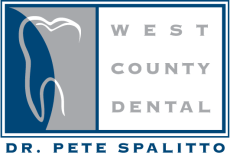Cone Beam 3D Imaging in St. Louis
State-of-the-Art Dental Technology
At our office, we are committed to utilizing advanced dental technology to always provide our patients with the highest level of dental care. One of the advanced technologies we use at West County Dental is Cone Beam CT imaging. We utilize cone beam technology because it gives us a clear view of facial nerves and bone structure, which allows us to plan a customized procedure to protect your nerve endings. Such advanced technology allows us to minimize pain and speed up the healing process.
What is 3D Cone Beam Imaging?
Cone beam 3D technology is an imaging system that provides our dentist and dental team with a three-dimensional image reconstruction of your teeth, mouth, jaw, neck, ears, nose, and throat. 3D Cone Beam imaging provides fast, comfortable, and highly effective dental imaging for an accurate dental health diagnosis. This scan takes approximately 20 seconds and allows your dentist to quickly assess your dental needs and get you back out enjoying your life in less time than you might expect from traditional imaging equipment.
Cone Beam CT has some similarities with traditional dental X-rays. However, traditional dental X-rays can only capture two-dimensional views of hard tissues (like bone and teeth), while CBCT can image these anatomical structures with less distortion, more clarity, and unlimited perspectives of areas of interest. These features help your dentist make an accurate diagnosis and choice of treatment for each individual patient.
For the dentist, these scans offer the ability to see intricate structures inside the mouth, such as root canals, nerves and sinuses in the jaw — in 3D — without having surgery. For the patient, it reduces the need for invasive procedures, allows for shorter treatment time and offers the chance for better results.
How 3D Cone Beam CT Scans Works
CBCT scans are quick and simple to perform, lasting only a matter of seconds. The cone beams are used to take hundreds of pictures of the face. These pictures make up an exact 3D image of the inner mechanisms of the face and jaw. The dentist is then able to zoom in on specific areas and view them from all different angles.
The 3D Cone Beam Imaging system is basically a digital x-ray scanner on a rotating arm. It’s called “cone beam” because the scanner projects x-rays in a carefully controlled, cone-shaped beam. You simply sit in a chair and relax while the scanner makes a complete circle around your head. No special preparation is needed.
Your dentist can then pull up whatever views they need on a computer monitor, allowing them to view these images from any angle and in different magnifications. This helps to see the relationships between bones, teeth, nerves and tissues and to plan your treatment going forward.
Patients have reported that the CBCT scanner is comfortable because the scanner works in an open environment, eliminating the claustrophobic feeling. The CBCT scan is a great tool that minimizes the cost of dental treatment, reduces treatment time, decreases radiation and enhances the end results of your dental surgery.
Cone Beam 3D Imaging Uses for Dentistry
Here are some of the main ways in which CBCT scans are used in dentistry:
- Assess the quality of the jawbone where the implant will be placed.
- Determine nerve location.
- Detect tumors and disease in the early stages.
- Measure density of the jawbone where the dental implant will be placed.
- Pinpoint the most effective placement for implants.
- Plan the complete surgical procedure, from beginning to end, in advance.
- Precisely choose the appropriate size and type of implants.
- View exact position of each tooth.
- View impacted teeth.
Benefits of Cone Beam 3D Imaging
The health and safety of our patients is our highest priority, which is why we at West County Dental utilize a cone beam imaging system in our office. 3D Cone Beam imaging produces a very low dose of radiation, reducing unnecessary exposure.
Some additional benefits of cone beam imaging include:
- Visualize anatomy that cannot be diagnosed externally or from traditional x-rays
- Create better, more effective treatment plans
- Assess benefits and risk of treatment options
- Analyze the position of critical structures, such as nerves, before the procedure
- Up to 10x less radiation exposure to the patient than traditional x-rays
- Faster scan time (10-40 seconds vs. several minutes)
- Less expensive
For any additional information, or to schedule an appointment, call West County Dental in St. Louis, MO today.

